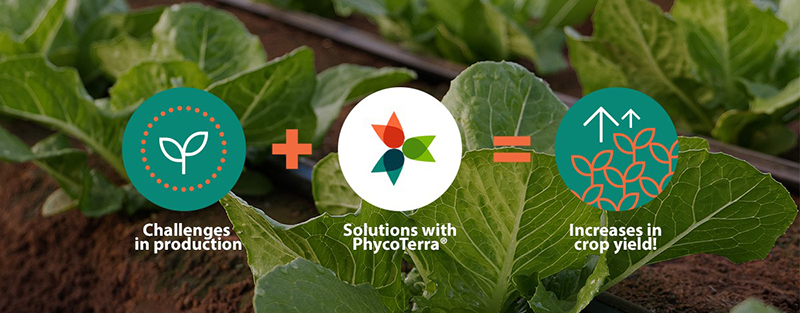How To Get Ready For The 2016 Fruit Season

Win Cowgill
As I prepare this article, the season is running a full two weeks ahead of last year’s green tip date on apple! Mature apple scab spores were detected on March 7 in New York’s Hudson Valley by Dave Rosenberger of Cornell University and on March 10 by Kari Peter of Penn State University in Adams County, PA. Cooler weather that was forecasted may have slowed the season down a bit.
Quick Tips
- Sprayer Check — The first order of business is have your sprayers out, cleaned, and ready to go. Make sure to flush water through the pump and system before you install your nozzles and screens. Make sure to calibrate the sprayer at both dilute and concentrated nozzling prior to the first application. I like to apply oil and plant growth regulators as close to dilute as possible or no more than two times.
- Preventative Disease Sprays — The two major early diseases of concern on apple are fire blight and apple scab. Apply your first copper spray for both apple scab and fire blight. Target your application for 2 pounds per acre of metallic copper. Pay attention to the percentage of metallic copper equivalent listed on the label of the copper you use.
- Follow The Forecast — Make sure you have access to and are utilizing an online weather forecasting system like NEWA or Skybit.
- Insect Management — On the insect side, manage for San Jose scale, which has shown a resurgence, especially where growers have not used oil for several years. I am urging all growers to get back to using dormant oil applications, as many growers have gotten away from it. I use it on all tree fruit crops in my research orchards annually. Oil is essential for pears as well as part of a comprehensive program to control pear psylla.
- Spray Inventory — Make sure to have all your early season chemicals on hand to take you through May at least. Make sure to have adequate supplies of streptomycin sulfate (various brand names) for the blossom blight phase of fire blight. Many growers in the Northeast needed to make up to five applications of streptomycin last year. Rotations with oxytetracycline hydrochloride sold as Fireline 17WP or Mycoshield 17WP or kasugamycin hydrochloride hydrate sold as Kasuminin 2L, should also be on hand for rotation.
See our comprehensive article on fire blight management published in the Spring 2015 issue of Horticulture News.
Take An Inventory of Your PGRs
A number of plant growth regulators (PGRs) are essential for apple production.
There are a number of chemistries and brands of materials for the various phases of fruit set, fruit thinning, growth control, shoot blight phase of fire blight, stop drop, and maturity delay.
Because the growing season in the Mid-Atlantic region including New Jersey, New York, and Pennsylvania seems to be running early, (more chance of frost) focus may need to be on enhancing fruit set of apples and European pears (and cherries).
At our recent Northeast PGR conference, there was some good data on enhancing fruit set of apple and cherry during bloom with the use of AVG or ReTain. The new ReTain label contains this new use. For apple, apply one pouch of ReTain per acre, as a single application from pink stage to full bloom. Applications made prior to pink stage or after full bloom will significantly reduce efficacy of the treatment. Do not apply after petal fall.
For cherries, apply one pouch of ReTain per acre, as a single application during bloom. Applications between balloon stage to first bloom are more effective than earlier or later applications. Do not apply after petal fall.
Prohexadione calcium is another essential PGR all growers should have on hand now! It is available as Apogee or Kudos 27.5 WDG. Low rates of either of these formulations should be applied to all apples at risk for the shoot blight phase of fire blight on almost all apples. Follow the label mixing order and additive suggestions. Our research shows applying early at pink at low rates with multiple applications at the correct intervals is the one of the best ways to prevent the shoot blight phase of fire blight.
PGR Thinners to Have on Hand
- NAA — many brands and formulations
- Amid-Thin W — (NAD) an old material with new uses, currently is under evaluation as replacement for carbaryl in thinning programs
- Carbaryl — multiple formulations, known as the workhorse of
chemical thinning - 6,BA — multiple formulations, for thinning and fruit size enhancement
- Ethephon — multiple formulations
- Promalin — applied at bloom for improved shape (‘typiness’) and size enhancement of ‘Red Delicious’ and ‘Gala’
PGRs For Return Bloom
After the traditional thinning window, summer applications of NAA and Ethephon have been shown to enhance return bloom the following season. Have adequate inventory.
Frost Protection Necessary
Have all your wind machines maintained, fuel tanks full, and conduct a test run. Make sure any frost fans are maintained and ready to go. Growers who use helicopter services should keep their contractors apprised of potential early bloom dates.
Weed Control
Orchard floor management program of sod middles and herbicide strips is recommended.
- For weed control, use a split season application program of pre-emergent herbicides for your residual weed control program, late fall, and spring applications.
- At each herbicide application, a material for pre-emergent broadleaf weeds and grass should be included. Weeds in the sod middles can be controlled in the fall after harvest or in the spring.
- For sod middles, make sure to control white clover at least once per year to avoid attracting honeybees. Most apple insecticides do not allow application in apple when ANY flowering plant is located in the orchard. 2,4-D amine alone will not control clover, add either clopyralid (Stinger or Spur) or Starane Ultra.
- Make sure to check all label registrations for your state when making any pesticide selection.
- Note: if the herbicide strip applications were not made last fall, you need to get your spring application on very soon. If any weeds are already emerged, a burn-down material must be included. If you did apply fall pre-emergent herbicides you will have until the end of April (early May in the Mid-Atlantic region) to get your pre-emergent materials applied.
Nutrition
Foliar leaf analysis and soil tests in the fall should guide your nutrition needs.
- My first spring application of nitrogen is applied at least three weeks prior to bloom. This first application should be in the form of a complete fertilizer containing N-P-K as indicated by soil tests. I apply 50 (pounds?) of the nitrogen needs as broadcast as this feeds my sod middles as well to maintain a healthy weed free turf.
- Make sure to soil test for sulfur, boron, and zinc, all essential for apple nutrition. Have them blended to your broadcast fertilizer if needed. Zinc is low in most New Jersey and New England soils. Sulfur also is showing low in all soil tests.
- Boron is essential for apples. I usually add one pound of actual boron per acre to my herbicide strip applications each spring and fall if tests show the need.
- The boron, urea, and zinc cocktail prebloom foliar spray on apple, developed by Dr. Warren Stiles, should also be applied to all apples to enhance fruit set.










